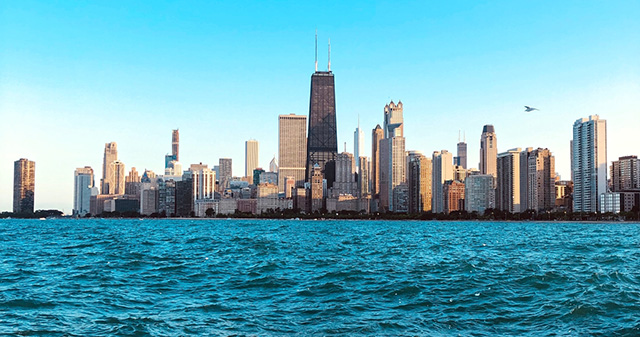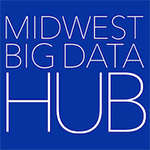By Qining Wang

Many living in and outside of the USA presume clean water to be universally accessible in the USA. In reality, many people are living in a water crisis.
A recent study published in Nature Communications assesses the degree of the clean water crisis. Researchers found that as of August 18, 2020, more than 22,000 community water systems are either serious violators of or in significant noncompliance with the Safe Drinking Water Act. As the researchers point out, “our findings demonstrate that the problem of water hardship in the United States is hidden, but not rare.”
A huge underlying cause is inaccessible data on water quality. Different governmental and state sectors, such as the National Oceanic and Atmospheric Association and the Environmental Protection Agency, collect data on various water sources. Yet, the lack of communication among different sectors creates fragmentation of watershed data. As a result, watershed data is widespread, difficult to locate, and sometimes wholly inaccessible. Such fragmentation significantly limits policymakers’ ability to make informed decisions to improve water quality. Neither would consumers be able to tell when their water is unsafe.
One solution is to create open data hubs that centralize accessible and interpretable data, which would require both governmental and nongovernmental efforts. As such, the creation of open watersheds manifests in interesting intersections of community empowerment, resident engagement, and watershed management. In a recent panel discussion titled “Open watersheds: Innovations in Community Water Data,” four panelists involved in open watersheds in the Midwest discussed the benefits, challenges, and opportunities in open-source environmental monitoring.
This panel discussion is part of the monthly Water Data Forum webinar series, co-hosted by the Midwest Big Data Innovation Hub, the Cleveland Water Alliance, and the Water Environment Federation. The participating panelists were Whitnye Long-Jones, founder and executive director of Organic Connects; Mark App, project manager of the Great Lakes Data Watershed; Barb Horn, expert facilitator and steering committee member of the Water Data Collaborative; and Brandon P. Wong, president and co-founder of Hyfi.
Envisioning Open Watersheds
Each panelist had their own vision for open watersheds. Despite coming from different backgrounds, all agreed on the importance of recruiting community effort. Wong spoke from a technological standpoint by relating open-source technologies to open watersheds. He said: “I think there’s a responsibility to see what’s going on underneath the hood.” When it comes to open watersheds, there should be transparency in the process, from data collection from physical devices to data storage. Wong believes that open technologies will allow people to speak openly about what they know about the watershed, knowing how the data is collected and processed.
Long-Jones mentioned creating connections with community members. Since data scientists tend to use jargon and terminologies to describe water data, it is crucial to train community members to make water data more interpretable. Horns reciprocated this point and talked about cultivating relationships between residents and institutions.
Tools for Open Watersheds
Panelists further discussed building connections and relationships when talking about different tools that can benefit the communities. Horn made a crucial point about building healthy relationships with new technologies that facilitate data collection: “Too often technology comes in with its excitement [. . .], but no one has spent that time helping them build the context on how to use it, so it just becomes a strategy that actually has a short-term gain but not long still sustainability even if it could have.”
Horn also explained using data and technology to serve “wholism.” In other words, we should use new technologies to collect data that foster collaboration and innovation. New technologies should not mean to create competitions that only profit a minority of people. “It’s not the community versus the agency or the Agency. It’s not the company industry against the community. It’s like, how can this [new technology] serve wholism? How can this technology serve us coming together in a whol[ly] innovative way?” Horn said.
Regarding the current challenges and barriers, App discussed how the lack of consistent standards in water data collection creates difficulty in data integration. He suggested creating new visions around watershed data. In those visions, data collection would not merely be the responsibility of isolated entities but would be up to the whole community. Skillful community members such as retired NASA engineers, motivated high school students, and computer professionals in pattern recognition can all contribute to monitoring water quality. He believes that those new visions will be the driving force to create open standards in open watersheds.
Open Watersheds and Beyond
The panelists also discussed the benefits of open watersheds beyond open-source data collection and environmental monitoring. Long-Jones emphasized that the community efforts in open watersheds can greatly benefit areas experiencing disinvestment due to historical redlining. “Now you’re seeing some of that even still continuing when we’re talking about cities [that] are experiencing dirty, unclear drinking water,” she said. Many residents in those communities struggle to meet their basic needs, and their survival priorities come before monitoring the contaminants coming out of their faucets.
In this regard, Long-Jones encourages us to envision communities beyond geographic boundaries and be open-minded and humble when engaging with community members bearing diverse backgrounds. Only by truly listening to each other and understanding where each of us comes from can we realize that open watersheds and improving water quality require everyone’s involvement.
Get involved
You can get more involved with open watersheds by participating in the Cleveland Water Alliance’s Smart Citizen Scientist Initiative, a movement that encourages youth, elder, and underrepresented citizen scientists to collect open-source data on Lake Erie with simple technologies. You can also join upcoming Water Data Forum sessions.
Contact the Midwest Big Data Innovation Hub if you’re aware of other people or projects we should profile here, or to participate in any of our community-led Priority Areas, which include Water Quality. The MBDH has a variety of ways to get involved with our community and activities.
The Midwest Big Data Innovation Hub is an NSF-funded partnership of the University of Illinois at Urbana-Champaign, Indiana University, Iowa State University, the University of Michigan, the University of Minnesota, and the University of North Dakota, and is focused on developing collaborations in the 12-state Midwest region. Learn more about the national NSF Big Data Hubs community.
